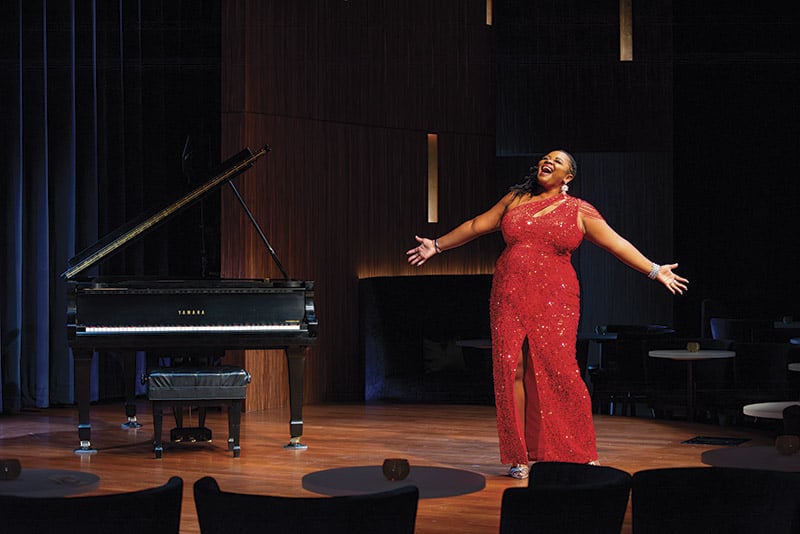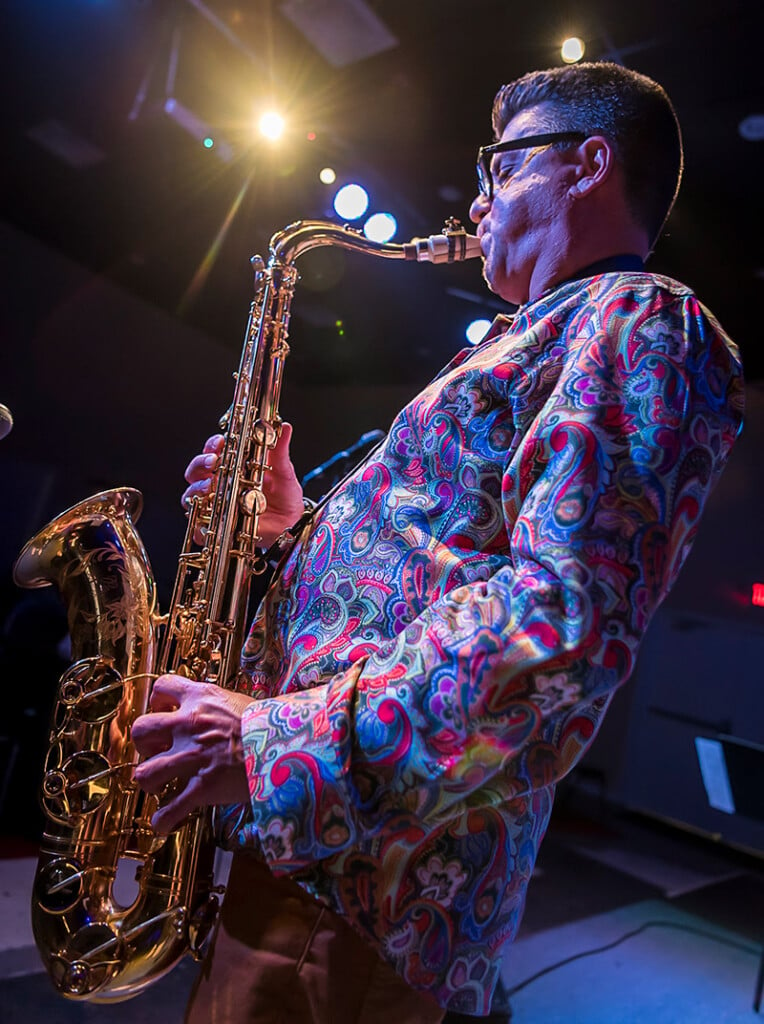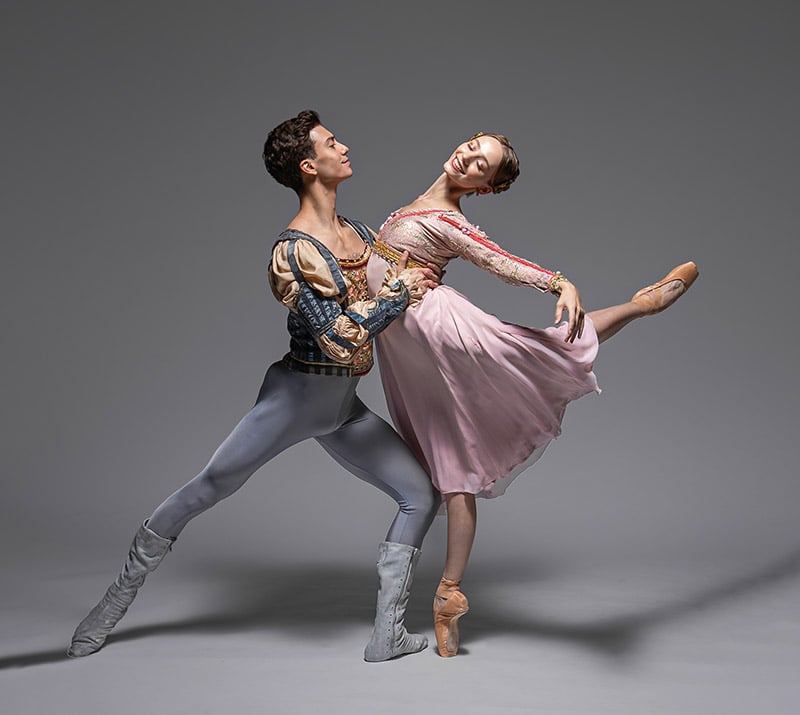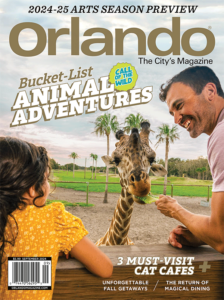Gatorland Global
Savannah Boan leads the park’s worldwide efforts to save alligators and crocodiles.Savannah Boan leads the park’s worldwide efforts to save alligators and crocodiles.

Gatorland Global’s Savannah Boan hanging out with one of her friends. (PHOTOS PROVIDED BY GATORLAND)
You can’t miss Savannah Boan with her signature blonde pigtails, wide-brimmed straw hat and pink fishing shirt topping her torn jeans. The vivacious, international ambassador for Gatorland Global fills the room with her big personality and warm smile. When you see her at Gatorland you’ll, no doubt, notice the large, polished crocodile tooth on a leather cord around her neck. “I never take it off. I keep it close to my heart. So if I ever question myself, I know I’m being a good person,” she says referring to all her efforts to save endangered crocodiles in countries like Cuba, Jamaica, Australia and Venezuela.
Together with Gatorland’s president and CEO Mark McHugh, the two launched Gatorland Global. “It was actually Savannah’s brainchild back in 2017 as we were trying to find ways to get Gatorland more involved with worldwide conservation of crocodiles and alligators,” explains McHugh, who is a son-in-law of the Godwin family who founded the Old Florida attraction back in 1949.
Gatorland Global has a three-pronged mission: to protect, conserve and educate. The protect portion happens right here in Florida with nuisance alligators. Gatorland has built relationships with several trappers who, instead of catching, euthanizing and selling the reptile for its meat and hide, will call Gatorland when they encounter a large alligator. “We will pay them so that they save the alligator’s life. We’ll put him out here in our big, old lakes and let him live out the rest of his life in alligator paradise,” explains McHugh.
This effort started about 20 years ago. Back in the day, attractions weren’t allowed to take alligators from the wild. So Gatorland worked with the Florida Fish and Wildlife Conservation Commission in Tallahassee to change the law and allow them to purchase alligators live from trappers.
Successful rescues have taken place on golf courses and highways, resulting in the park’s new residents earning names like “Bogey” and “Turnpike.” They also have a gator with the name “Winchester” who came to them with gunshot holes, thus the name. (Shooting a gator is illegal.) “It’s not their fault they were in the wrong place at the wrong time, or someone started feeding them. It’s a way to save their lives,” emphasizes McHugh.
The second part of Gatorland Global is to conserve not only the endangered crocodiles around the world, but their habitats, as well. The mission is to protect any crocodile or alligator that is in peril.
Boan got hooked on crocodiles as a youngster growing up in South Carolina. Oddly enough, she attributes her fascination with the reptile to the character Ricky Ricardo from the “I Love Lucy” show. When he went to Cuba, she found herself looking the country up in an encyclopedia and discovering Cuban crocodiles, which later in life became her passion.
However, before becoming an advocate for conservation she was in radio. In between jobs, Boan worked at a reptile zoo in California, which rekindled her love for everything reptile, especially the Cuba crocodile. Soon she was off to Cuba in search of the animal; she managed to make her way to a crocodile farm and meet its biologist. A friendship ensued as she spent several days learning about the species. Needless to say her reptilian passion flourished.
“I knew Gatorland was the best alligator/crocodile park in the world and I had already been there so many times. I just wanted to work there,” she says. Boan applied several times and finally in 2016 got hired as the crocodilian enrichment coordinator.
Boan, McHugh and a park director traveled to the Criadero de Cocodrilos, nursery for crocodiles in Boca de Guamá and Gatorland Global had its first international project. The team has assisted in releasing 16 Cuban crocodiles into the wild. “When it comes to conservation, you want to see the animal come out of the egg, grow a little bit and then go back to where it should be,” says Boan.
In Jamaica, they work with the National Environment and Planning Agency and support the American crocodile sanctuary in Holland Bay with a head start program. When the crocs hatch and grow to a certain size, Boan’s team goes down to assist with health assessments and releasing them into secret parts of Jamaica that no one should know about so they are protected.
Saving the endangered Orinoco crocodiles in Venezuela is another project. Gatorland has two hatchlings in the park that are being fed, measured and weighed regularly and will be released deep into the wilds of Venezuela when they are ready. They are not on display, as human interaction is very limited so they can adapt in a natural habitat.
Gatorland Global is also working on a project in South Florida to track crocodiles. The warm waters near Turkey Point Power Plant have become a nesting ground for American crocodiles. “No one is tracking them outright, and we’d love for the state to know how crocodiles are moving through Florida,” says Boan. Last December a croc showed up in Brevard County. “It didn’t swim up the beachline, so what path did it take?” she asks.
Even science is puzzled as to how crocodiles get to different places, and more importantly, what is driving them to go there? Each individual alligator and crocodile has a completely different personality. “When we do our Jumparoo shows, it’s always fascinating to me which alligators and crocodiles wake up on that day and say, ‘You know what, I think I’m going to go to the show today and I’m going to jump higher than before,’” she says with a chuckle.
Boan is also a member of the crocodile specialist group within the International Union for Conservation of Nature. She is the sole social media personality and is working hard on bridging the gap between science and social media communities.
The third part of Gatorland Global is education. Gatorland Global is fully supported by its social media—Instagram, Facebook and YouTube. “We tell people that just by watching our videos, that’s a donation. Sharing the stuff helps us,” says Boan. The shares and views result in more revenue, which Gatorland uses exclusively to fund Gatorland Global projects.
During the pandemic, they launched the School of Croc, a daily educational program hosted by Boan on YouTube. It has received more than a million views. Inside the park, a conservation wall features all the great things Gatorland Global is doing to support people worldwide who work every day to save animals from extinction, especially the crocodiles and alligators.






